#nicnevin
Explore tagged Tumblr posts
Text










Decided to make some mega dumps of all the sketches done from march till now
#oc#original character#sketch#original art#traditional art#my art#my oc#friend's oc#alliedn#mab#nicnevin#diana#fabian#joe#kheff#dima#domino#sodoma#cleo patrix#malakay#wolly#venus#venom
35 notes
·
View notes
Text
Now that I’ve spoken about the master, I wanted to talk about my mistress…
Nicnevin, the Gyre Carlin and Queen of the Unseelie Court
Nicnevin (or Nicneven, Nyneve, Nignivie) is a name that lingers in the damp winds of Scotland, woven into the old roads of witchcraft, faery lore, and the calls of geese at night. She is the Gyre Carlin, the great witch-mother, feared and revered in equal measure. She is no mere mortal sorceress but something older, one of the Queens of Elphame, ruler of the Unseelie Court of Autumn and Winter, mistress of wild magic.
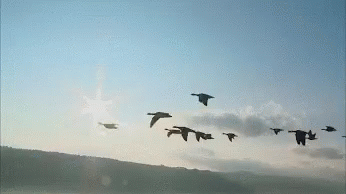
The Whirling Hag and Her Spinning Magic
The title Gyre Carlin is more than just a name. Gyre means to whirl, to spiral, to turn, and Carlin is the Scots word for a witch or crone. She is the Spinner, the one who twists fate upon her spindle, weaving spells as fine as gossamer and binding spirits as surely as a knotted thread. Like the Cailleach, she is tied to the great cycles of time, turning the wheel of the seasons, unraveling the threads of life and death.
Witches who followed her were said to use enchanted thread in their charms—knotted cords to bind or unbind, spun flax to draw down the wind, red wool to turn away the ill ee. In some tales, Nicnevin herself would spin fate into being, crafting charms that could grant second sight or summon a lover’s spirit from across the moors.
Her role as a spinner also ties her to transformation. Just as thread changes shape beneath the fingers of the weaver, Nicnevin herself is ever-changing. In some stories, she shifts her form from a hag to a maiden, from a woman to a hare, an owl, a great black mare. She teaches her witches the same arts, how to slip from one shape to another, how to run unseen in the night, how to vanish with the turn of a cloak.
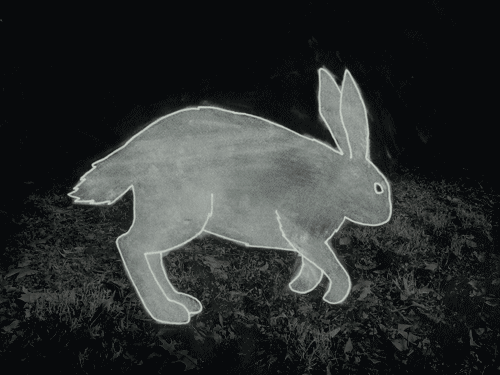
Herbal Magic and the Poisoner’s Art
Nicnevin’s witches were also known for their knowledge of herbs—both for healing and for harm. She was a patron of those who gathered in the moonlight, searching for roots and flowers with potent virtues. It was said that certain plants, when picked on her feast night, carried an extra charge of magic.
Henbane and nightshade, foxglove and yew—plants of dream and death, spirits bound in green flesh. Her followers knew which could grant visions, which could numb pain, which could send the soul flying from the body to join her spectral hunt. They brewed ointments from these herbs, rubbing them into their skin to slip between worlds, riding the wind to Elphame.
Yet she was not only a bringer of poison—Nicnevin was also a great healer, though her ways were wild and strange. In folk belief, certain illnesses were caused by fae mischief or the interference of spirits. A wise woman who called on Nicnevin might craft a charm to lift such afflictions, whispering her name over water poured through a holed stone or mixing herbs into an offering left at the crossroads.

The Unseelie Queen and Her Spirit Host
As Queen of the Unseelie Court, Nicnevin rides at the head of a fearsome procession. Unlike the gentler Seelie fae, who may grant fortune to those they favor, the Unseelie are the dark and wayward spirits—restless dead, twisted fae, and witches who did not find their peace. On stormy nights, her host sweeps over the land, their passage marked by sudden gusts of wind, the barking of unseen hounds, or the flicker of lights in the bog.
To cross her path unprotected is to risk being swept away—unless one knows the proper rites. Some folk left out offerings of milk, ale, or bread to keep her favor. Others carried rowan or iron, whispering charms if they heard hoofbeats on the wind. Those who dared to ride with her might return forever changed—if they returned at all.

Nicnevin’s Legacy
Though her name has faded from common telling, traces of Nicnevin still linger in Scotland’s folklore, in the rites of witches who spin and weave, in the gathering of herbs beneath the moon, in the whisper of wind that carries the scent of heather and something older still.
She is the Spinner, the Poisoner, the Queen who flies.
Would you know her, if she called you to join her revel?
#folk witchcraft#traditional witchcraft#witchcraft#traditional witches#folk witch#folk witches#witch#trad witch#folklore#nicnevin#witch mother#witch Queen#gyre carlin#spinning thread#herb lore#shapeshifting#witch patron#matron
11 notes
·
View notes
Text








Dnd 5e 2024 arch hags were made for me and 3 other people specifically and I couldn't be happier
#artists on tumblr#doodle#dnd#sketchbook#friend's oc#trinket#ruth#my oc#nicnevin#ginevra#ollie#haggis#diane
16 notes
·
View notes
Text


Often bought together- DO NOT SEPARATE (。•̀ᴗ-)✧
Aka- saw @alliedn drawing (on the left) and decided to create a version with my fairy queen oc and her royal guard 🐰💖
Her ocs on the left are Nicnevin (queen of the Autumn Fairy Court) and his royal guard Paladin.
Mine, on the right, are Mab (queen of the Spring Fairy Court) and her guard Agdon Longscarf (taken directly from the dnd manual The Wild beyond the Witchlight, which I am mastering rn).
#fairytail#fairy#fantasy#fairy aesthetic#my art#my oc#friend's oc#friend's art#alliedn#nicnevin#paladin#mab#agdon longscarf
30 notes
·
View notes
Text


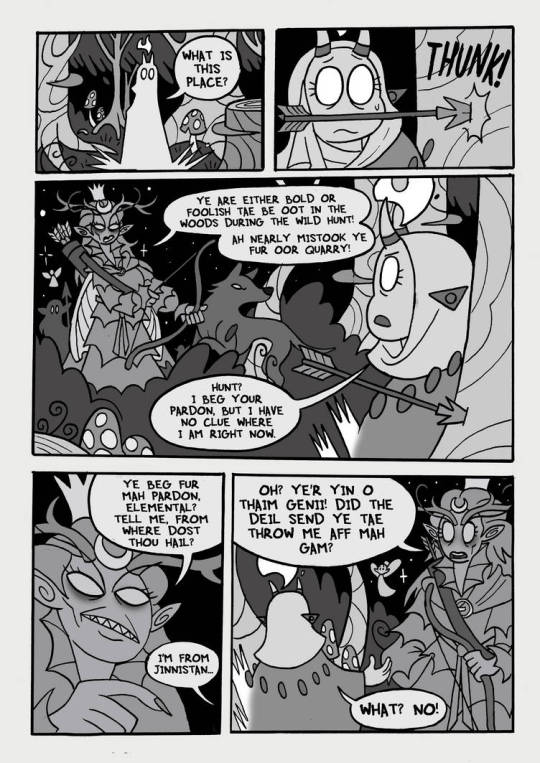

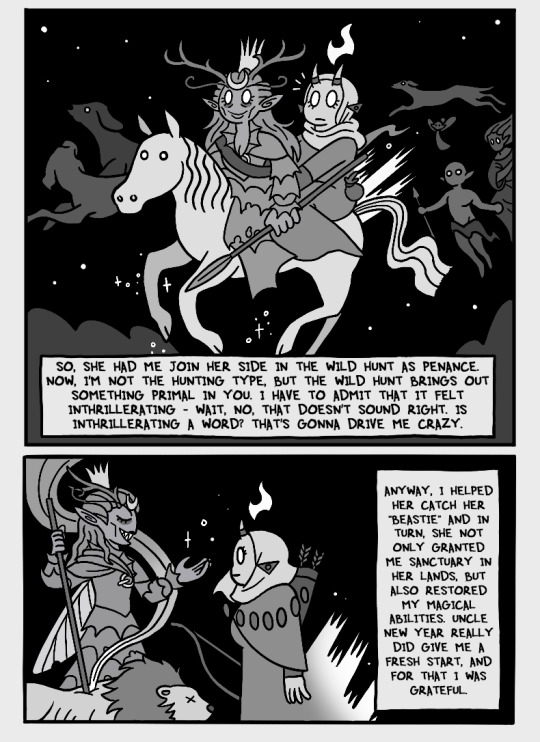
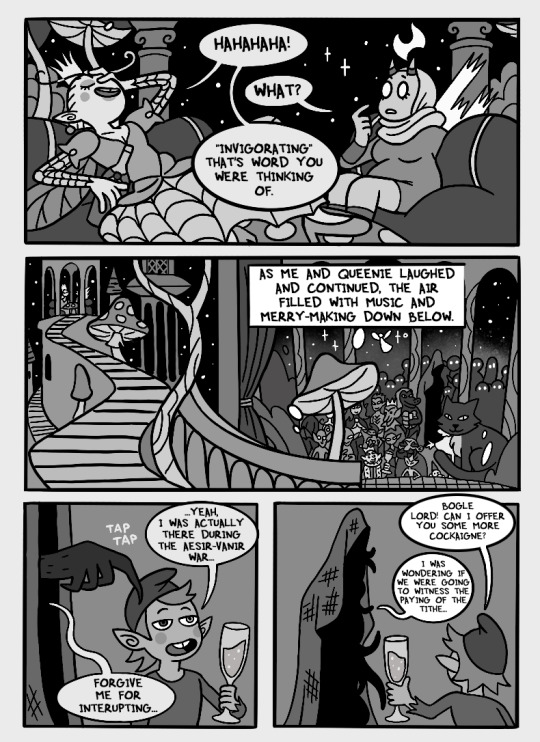
Tales of the Otherfolk - Escapism [pages 28-33]
#Tales of the Otherfolk#my art#webcomic#comic#mythology#folklore#amu nowruz#jinn#djinn#fairy queen#wild hunt#bogeyman#nicnevin#witch#gyre carlin
61 notes
·
View notes
Text
I've noticed that I have ties/draws to birds, without really thinking of them as birds.
Barn Owl has been with me a long time, and ties me to Blodeuwedd
Corvids are significant to the Morrigan
Nicnevin is associated with geese (I lean specifically towards Barnacle and/or Brant geese)
Freyja has a cloak of falcon feathers that allow the wearer to fly
It's a significant thing though. Birds are most often associated with Air, for pretty obvious reasons. All four of these Goddesses have ties to the Other-/Underworld. Air is East, the Underworld is West. Travel and Communication are East, but crossing over and contacting that other plane are West. I'm a Scorpio Sun, a Water sign, and that plus my Sorgae Directions make me Westerly. But these animals cross the Circle and draw me East. Or rather, their dual associations create that connection of opposing and complementary energies. I'm also an Aquarius Rising, which is an Air sign; one's Sun is their core, their true self, and their Rising is their public self, what they show outwardly. Water is my core, but Air is the face I show.
The East-West axis is a significant one in Sorgae 'Craft, something I'll go into later. But I think it's the birds' West connection that makes my brain categorize them as "not-birds." They are vessels for messages from the Spirit realm in my mind.
8 notes
·
View notes
Text
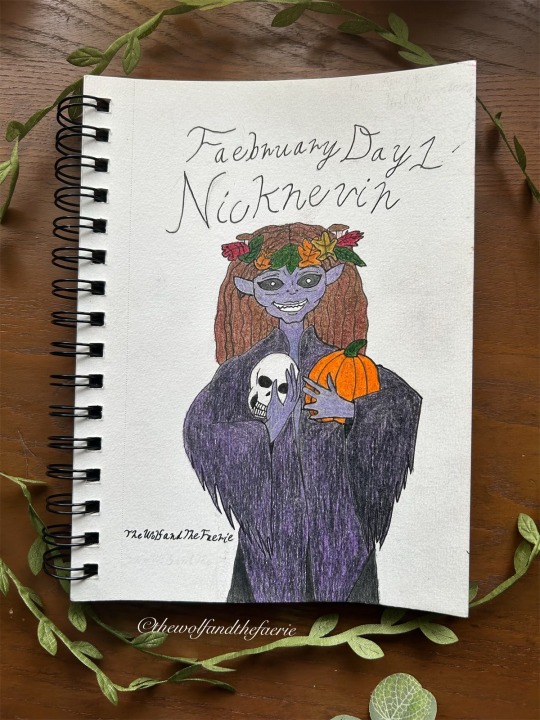
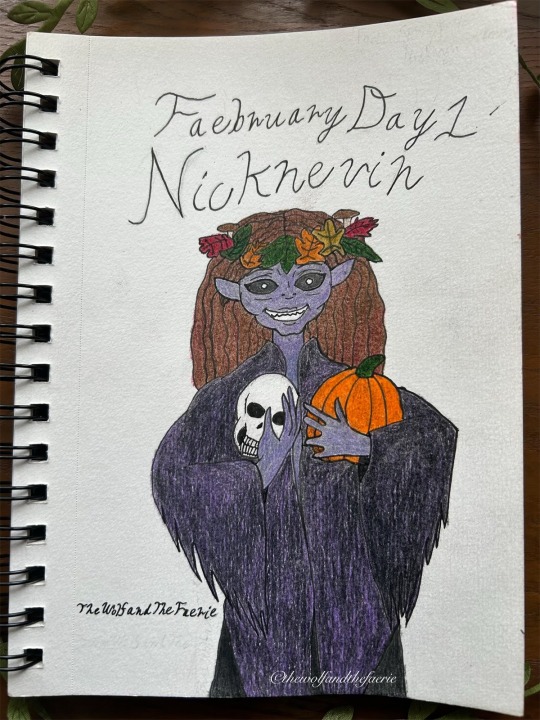

Faebruary Day 1~Nicknevin
Brett Manning’s Faebruary Art Challenge is back. I’m really excited to participate in this challenge again this year. This is my interpretation of Nicknevin. She is a dark and malignant fae associated with the night and Samhain. I’m really glad on how this turned out. I never drawn older women before, so I was really happy about the details in her face. The colors really came together, too. I’m definitely going to revisit this design in the future.
@brettmanningart
IG: thewolfandthefaerie
#my art#mine#brett’s faebruary art challenge 2024#faebruary#nicknevin#nicnevin#fae#faerie#the wolf and the faerie
8 notes
·
View notes
Text
Faebruary/Februfairy 2024: "Deal"
Before the war, the Unseelie Court had taken changelings all the time. The other kings and queens of the fairies had put a stop to that. In the terms of her surrender, Gyre-Carling had been forced to say that she would never make another changeling again. She had no choice but to honor that vow. She was a full fairy, and even one as powerful as she was couldn't lie.
It made her blood boil, being forced into this "deal" in exchange for her survival.
But she could make deals of her own. If she couldn't create new changelings, she would find new agents to act on her behalf in the mortal world. With magic fading there, witches were all too eager to form pacts with a powerful patron. She would augment their sorcery in exchange for their service.
She made deals with other humans, too. Drew them into Elfame to satisfy other deals she had made. There was always an upcoming Tithe to think about.
Never make a deal with the Unseelie Court. Grye-Carling will make sure that you lose.
And in time, she swore, she would make the other courts pay for putting her through this.
#Faebruary#Februfairy#Unseelie#Grye-Carling#Nicnevin#Fairy#Fairies#The Fair Folk#Fae#Tithe to Hell#Apparently I'm a prompt behind so have an extra one today.#(He said to the nobody reading.)
6 notes
·
View notes
Text




Dump of some of my favorite artworks from this month
#fantasy art#my art#artist#digital art#art#artwork#my artwork#starling ocs#muriel connelly#diwata zaman#nicnevin#artsona#monstersona#teifling#dnd#dnd art#fantasy
1 note
·
View note
Text

I think I have an elf bias because the only full human here is Frost 😭
#i might redo Niveria cause her vibes are off#oc niveria#oc rosephayne#oc alyx#oc Nicnevin#oc Frost#oc Nerevar#Quinn and Rainier are the only ones left to sketch and im so excited about finishing it 👏
3 notes
·
View notes
Text
Niveria/Cicero: Whispers in the Dark by Skillet (yes I did originally associate it with them because of the quest of the same name)
Rosie/Karasu: No Light No Light by Florence + the Machine
Lucien Lachance/Nicnevin: Howl by Florence + the Machine
Bismuth/Martin Septim: HONEY (r u coming?) by Måneskin
Lucien/Quinn: Fire Flies by Gorillaz (note this is an OC who named himself after Lucien Lachance. That's his grandfather :3)
Alyx/Niveria: YKWIM? by Yot Club
I come back asking for more OC song pairings!
So I asked before about what singular song fits everyone's TES OCs the most. Now I'm asking what song fits their pairings the most. Could be OC/ OC or OC/Canon, oh OR OC & OC, OC & Canon, if you have non romantic/queerplatonic pairs. I'll start:
Lilliandra/Miraak (they get two!! their playlist is so long): Carve Your Name By Mother Mother | Your Wicked Company by Harley Poe
Lilliandra/Cinnara (this one is a little more difficult): Between My Teeth by Orla Garthland or Too Sweet Covered by Reinaeiry (original Hozier)
Lilliandra & Elikar: Family by Mother Mother (this also fits for the eventual found-family group of theirs)
Elikar & Serana: Side Quest Song by Madilyn Mei (QPR tho!)
And because I saw some people asking last time if it was okay, EVERYONE is welcome to join! I wanna see everybody's OCs and songs!!
#alyx and niveria only kinda get together after cicero dies tho#oc niveria#oc rosephayne#oc karasu#oc Nicnevin#oc bismuth#oc lucien#oc quinn#oc alyx
66 notes
·
View notes
Text
November Witch Guide
New Moon: November 1st
First Quarter: November 8th
Full moon: November 15th
Last Quarter: November 22nd
Sabbats: None
November Beaver Moon
Also known as: Blotmonath, Dark Moon, Digging Moon, Deer Rutting Moon, Freezing Moon, Fog Moon, Frost Moon, Herbistmanoth, Mad Moon, Moon of Storms, Moon of when the Deer Shed Antlers, Mourning Moon, Snow Moon & Whitefish Moon,
Element: Water
Zodiac: Scorpio & Sagittarius
Nature spirts: Subterranean Faeries
Deities: Astarte, Bast, Black Isis, Hecate, Kali, Lakshmi, Mawu, Nicnevin, Osiris & Saraswati
Animals: Crocodile, jackal, scorpion & unicorn
Birds: Goose, owl & sparrow
Trees: Alder, cypress & hazel
Herbs: Betony, blessed thistle, borage, cinquefoil, fennel, grains of paradise & verbena
Flowers: Blossoming cacti & chrysanthemum
Scents: Cedar, cherry blossom, hyacinth, lemon, narcissus & peppermint
Stones: Beryl, cat's eye, chrysoberyl, citrine, lapis lazuli, sapphire, topaz & turquoise
Colors: Blues, grey, sea-green & silver
Issues, intentions & powers: Cooperation, darkness, divination, healing & hope
Energy: Communication with your deity, death, focus, passion, preparation, secrets, sex matters, taking root & transformations
The Beaver Moon gets it's name because this is the time of year when beavers begin to take shelter in their lodges, having laid up sufficient food stores for the long winter ahead. During the fur trade in North America, it was also the season to trap beavers for their thick, winter-ready pelts.
• This is the final supermoon of four consecutive supermoons of the year! This means that it will appear bigger and brighter than normal!
Other Celebrations:
• Lunantishees- November 11th
Also known as: The day of the Sídhe
This day celebrates the Lunantishee Faeries & honors the sacred blackthorn tree that they protect. It is said these faeries dance around their host blackthorn tree or bush by the light of the full moon in which they worship. The Lunantishee are closely associated with moonstone as their name of Moon-Sidhe or moon faeries suggest. These faeries are intensely protective guardians who highlight to us the need to protect our homes & our personal energies/ourselves.
•Night of Hecate -November 16th
Though many choose to honor the Goddess Hecate during this day, there doesn't seem to be any historical evidence suggesting this particular day has any traditional associations or events & likely was mistaken from Hekate's Deipnon which takes place during the dark phase of the moon. However modern practitioners use this day to honor Hekate despite this.
Sources:
Farmersalmanac .com
Llewellyn's Complete Book of Correspondences by Sandra Kines
Wikipedia
A Witch's Book of Correspondences by Viktorija Briggs
Encyclopedia britannica
Llewellyn 2024 magical almanac Practical magic for everyday living
#witchblr#wiccablr#paganblr#witch community#witches society#witch guide#November 2024#November#Beaver Moon#witches of tumblr#tumblr witches#witchcraft#beginner witch#baby witch#witch tips#baby witch tips#witchcore#traditional witchcraft#grimoire#book of shadows#full moon#spellbook#spellwork#witch#witchy stuff#witchy things#GreenWitchcrafts#witches#witchythings#witchyvibes
92 notes
·
View notes
Text
Hellenic Gods Fact Sheets and Hymns: Hecate
Other Names: Trivia, Brimo
Epithets: Anassa eneroi (queen of those below), Aidonaia (lady of the Underworld), Amibousa (she who changes), Atalus (tender, delicate), Borborophorba (she who feeds on filth), Brimo (angry, terrifying), Despoina (mistress), Eileithyia (of childbirth), Enodia (of the roads), Epaine (dread), Euplokamos (bright-tressed), Khthonia (of the Underworld), Kleidouchos (keeper of the keys), Kourotrophos (protector of children), Krokopelos (saffron-robed), Liparokredemnos (bright-coiffed), Nycteria (nocturnal; of the night), Nyctipolos (night-wandering), Perseis (destroyer/ daughter of Perses), Phosphoros (light bearer), Propolos (guide), Propylaia (the one before the gate), Scylacagetis (leader of dogs), Soteira (savior), Trikephalos (three-headed/of the crossroads), Trimorphos (three-formed), Trioditis (of the three ways), Trivia (of the three ways).
Domains: Witchcraft, magic, necromancy, ghosts, nightmares, death, initiation, the crossroads, gateways, passage between worlds, and the night.
Appearance: [My UPG] A tall (over 6’) woman, neither young nor old, with waist-length black hair, pale skin, prominent cheekbones, a heavy jaw, and intense green eyes. She is usually dressed in black folds molded into a simple dress or robes. She has a severe expression and an intimidating presence. She speaks with a low voice.
Sacred Days and Festivals: Eleusinia (22 Metageitnion). Nemoralia (August 13th-15th). Deipnon, last day of each (lunar) month.
Symbols/Attributes: Torches, keys, daggers, strophalos (iynx wheel)
Sacred Animals: Dog, polecat, serpent, horse, frog.
Sacred Plants: Yew, cypress, garlic, willow, hazel, black poplar, aconite, belladonna, dittany, mandrake, hemlock, asphodel
Elemental Affinity: Darkness, light, fire
Planet: Moon
Colors: Black, saffron, silver.
Crystals: Black onyx, hematite, obsidian, black tourmaline, moonstone, smoky quartz, agate, amethyst.
Incense: Myrrh, almond, cypress, camphor, saffron, mugwort, pomegranate.
Tarot Cards: The High Priestess, The Moon, Death
Retinue: Empousai, ghosts of the dead, dogs, Lampades (torch-bearing underworld nymphs)
Associated People: Witches (and other magic-users), the dead
Offerings: Bread, eggs, honey, garlic, menstrual blood, graveyard dirt.
Syncretized With: Artemis, Diana, Persephone, Eileithyia, Selene, Nephthys, Ereshkigal, Nicnevin, Heqet
Hymns to Hecate
Orphic Hymn to Hecate
Hekate Enodia, Trivia, lovely dame, Of earthly, watery, and celestial frame, Sepulchral, in a saffron veil arrayed, Pleased with dark ghosts that wander through the shade; Daughter of Perses, solitary goddess, hail! The world’s key-bearer, never doomed to fail; In stags rejoicing, huntress, nightly seen, And drawn by bulls, unconquerable, monstrous queen; Leader, Nymphe, nurse, on mountains wandering, Hear the suppliants who with holy rites thy power revere, And to the herdsman with a favoring mind draw near.
Hecate’s Hymn to Herself
I come, a virgin of varied forms, wandering through the heavens, bull-faced, three-headed, ruthless, with golden arrows; chaste Phoebe bringing light to mortals, Eileithyia; bearing the three synthemata [sacred signs] of a triple nature. In the Aether I appear in fiery forms and in the air I sit in a silver chariot, Earth reins in my black brood of puppies.
(From Porphyry’s lost commentary on the Chaldean Oracles, preserved by Eusebius of Caesaria in Praeparatio Evangelica. According to Porphyry, this hymn was composed by Hecate herself.)
Magical Invocation to Hecate
Approach, you of the netherworld, of earth, of heaven, Bombo! You by the wayside, at the crossroads, light-bearer, night-wanderer, Enemy of light, friend and companion of night, Rejoicing in the howl of dogs and in crimson gore, Lurking among the corpses and the tombs of lifeless dust, Lusting for blood, bringing terror to mortals, Grim one, Ogress [Mormo], Moon – you of many forms, May you come gracious to our sacrificial rites!
(Preserved in Refutation to All Heresies by Hippolytus)
Invocation to Hecate from PGM IV 2708-84
Come, giant Hecate, Dione’s guard, O Persia [daughter of Perses], Baubo Phroune, dart-shooter, Unconquered Lydian, the one untamed, Sired nobly, torch-bearing, guide, who bends down Proud necks, Kore, hear, you who’ve parted / gates Of steel unbreakable. O Artemis, Who, too, were once protectress, mighty one, Mistress, who burst forth from the earth, dog-leader, All-tamer, crossroad goddess, triple-headed, Bringer of light, august / virgin, I call you Fawn-slayer, crafty, O infernal one, And many-formed. Come, Hekate, goddess Of three ways, who with your fire-breathing phantoms Have been allotted dreaded roads and harsh / Enchantments, Hekate I call you
[…]
O Hekate of many names, O Virgin, Kore, Goddess, come, I ask, O guard and shelter of the threshing floor Persephone, O triple-headed goddess, Who walk on fire, cow-eyed BOUORPHORBE PANPHORBA PHORBARA AKITOPHI ERESHKIGAL / NEBOUTOSOUALETH Beside the doors, PYPYLEDEDEZO And gate-breaker; Come Hekate, of firey Counsel, I call you to my sacred chants.
#hecate#hekate#greek gods#greek goddess#hellenic paganism#hellenic polytheism#helpol#witchcraft#witchblr#hecate worship#fact sheets#orphic hymns#greek magical papyri
460 notes
·
View notes
Text
Witches Have Patrons, Pagans Have Gods… what’s the difference?
Witches don’t kneel… Or at least, not in the way pagans do. A witch’s relationship with spirits is not about worship, but about work. Bargains struck in the dark, knowledge whispered in the wind, and power granted with a price.
Pagans raise temples, offer prayers, and seek blessings from the gods, honoring them as cosmic forces that rule over the land, the sky, the cycle of life and death. Witches meet their patrons at the crossroads, enter into pacts, and learn the ways of the hidden and the wild.
What Makes a Patron Different from a God?
In simple terms, a god wants reverence, a patron wants loyalty. Gods are distant rulers of vast domains like fertility, war, wisdom, and the underworld. They are prayed to, sacrificed to, honored through rites passed down for generations. Patrons are intimate; they choose their own, appearing in dreams, the woods at dusk, or the moment a witch dares to step beyond the hedge. They don’t require temples, just devotion to the path they offer and the price they give.

A god blesses, a patron teaches. Gods bestow boons and protection upon their worshipers, asking for faith and offerings in return. Patrons initiate. They test. They demand. The devil might lead a soul into the woods and show them how to shift their form. A witch queen might press a cold hand to your forehead and grant second sight. These spirits forge witches.
In concept, a god may rule over nature, while a patron embodies it.
A storm god commands the sky; a witching spirit is the storm. A deity of the hunt governs beasts; the devil runs with the hounds and the stags alike. Patrons are the forces witches slip into when they take flight or change their shape.

To work with a patron is to do— to gather herbs beneath the moon, to carve charms of bone and wood, to offer blood, breath, and toil. Patrons don’t just give, they expect something in return. A witch serves not as a worshiper, but as an initiate.
So, Can Witches Work with Gods?
Of course, some do. Hekate, Odin, Nicnevin, and other spirits of the land all blur the lines between gods and patrons. But in the end, it’s not about who you follow, but how you follow them.
Pagans worship. Witches make pacts.
The gods rule. The patrons call.
And a witch knows the difference.
#folk witchcraft#traditional witchcraft#witchcraft#traditional witches#folk witch#folk witches#witch#trad witch#folklore#gods#deities#witching spirits#witch lore#religion#faith#pagan#paganism#animism#witch patron#pact#devotion
43 notes
·
View notes
Text
My collection of Goddess statues ⬇️
🌒 Aradia 🌘

💀 Hekate 💀


🌸 Blodeuwedd 🌸




🗡 The Morrigan 🗡


🔮 Freyja 🔮

🧝♀️ Nicnevin 🧝♀️

5 notes
·
View notes
Note
Hey!! I want to know more about Traditional Witchcraft.
I have been reading Aradia and the Gospel of Witches and I want to know if there is a Northwestern European, British or Scottish idea of Aradia and her mother and father??
Thank you so much!! I can’t wait to convert to the Traditional Witch Path!
Aradia is Herodias, which is, according to Carlo Ginzburg, a Christianization of the Goddess Hera, but according to Sabina Magliocco, also a remains of Hecate, because she flights in the night.
She is a Deity which is not only Italian, but pan-European, in fact in the Canon Episcopi we read about women who dreamt/imagined to fly with both Diana and Herodias.
Herodias became Redodesa in Veneto, Araja/Arada/Sa Rejusta in Sardinia, Arada and Irodeasa in Romania, and so on.
The point is that probably she wasn't always the daughter of Diana, but assimilated/synchretized to her. In fact, Herodias is actually the name of the mother of Salomé, which in the Gospels killed John the Baptist. In the medieval folklore he blows from the mouth of the cut head and from that moment on Salomé is condamned to fly forever, especially in the night. In many folklore tales, both the mother and the daughter, Salomé and Herodias, are seen together, and Herodias of the Canon is actually Salomé called with her mother's name.
Probably, therefore, the legend that Leland writes and re-elaborates to create the Aradia (because the original legends are found both in Etruscan Roman Remains and in Legends of Florence, so we know that Aradia is just a re-elaboration of original folk legends from Florence and Tuscany-Romagna region) is influenced by this idea of Salomé seen with her mother Herodias. So Salomé (called Herodias for the medieval conflation and mispelled Aradia by the people) is the daughter of Diana like she is the daughter of Herodias in other legends (and in the original Gospel tale).
We also have the original legend about Diana seducing his brother, but here there is no daughter, and instead of going to the "Fathers and Mothers of the beginning", in the original tale she goes to other witches.
Moreover, in the original tale from Legends of Florence, the brother isn't called by name.
However, in many trials in Northern Italy, the Domina Nocturna (ex. Lady of the Game) is paired with the Devil. Moreover, many folk magicians in Italy prayed to the "Star Diana"... which is Lucifer. So Lucifer is both the Devil and Diana herself, and the Devil could be associated with Diana as his partner because the same happened to the Lady of the Game (and overseas with the Queen of Elphame).
We also know from The Strix by Della Mirandola that nearby the areas in which Leland found the folktales from which he will elaborates to make the Aradia, people still associated Diana with the Moon. So if Diana is the Moon, for symmetry Lucifer should be the Sun.
So this brother for symmetry could be seen as both the Devil and associated with the Sun, but also with stars for the Stella Diana which is Lucifer. In fact, in Aradia he is the God of the Sun, the Light and the Stars.
So Diana is associated with Aradia for the Salomé-Herodias pair and with Lucifer because of the Stella Diana, the pair with the Devil and the folk idea that the Sun is the brother of the Moon.
However, Lucifer is still a name for Apollo, even in Orphic Hymns (where it's Phosphoros), but I don't think it's been done willingly, it's a coincidence, or better a synchronicity.
For the British context, in Sir Orpheo, Dame Heurodis is kidnapped by the King of Fairies, and Heurodis is a variation of Herodias.
Also the Canon is quoted a lot in Britain while they talk about the idea of the Fairy Queen or Queen of Elphame.
So probably in Great Britain both Diana and Herodias are synchretized with the Queen of Elphame. The Queen, which is usually called Nicnevin (or Titania/Mab in Shakespeare) is the spouse of the King of Elphame, Oberon, who is sometimes demonized, and sometimes is also called Christsonday.
I hope having answered :)
#traditional witchcraft#reconstructionist traditional witchcraft#tradcraft#trad craft#folkloric witchcraft#italian witchcraft#reconstructionism#pagan#paganism#stregheria#Aradia#Diana
40 notes
·
View notes